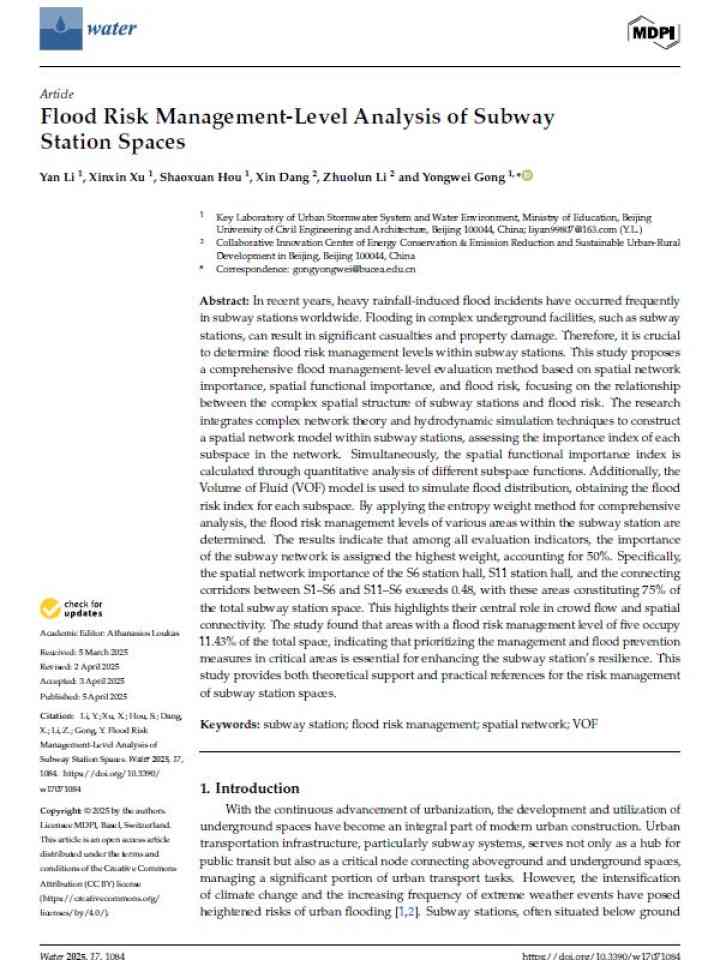Flood risk management-level analysis of subway station spaces
This study proposes a comprehensive flood management-level evaluation method based on spatial network importance, spatial functional importance, and flood risk, focusing on the relationship between the complex spatial structure of subway stations and flood risk. The research integrates complex network theory and hydrodynamic simulation techniques to construct a spatial network model within subway stations, assessing the importance index of each subspace in the network. Simultaneously, the spatial functional importance index is calculated through quantitative analysis of different subspace functions. Additionally, the Volume of Fluid (VOF) model is used to simulate flood distribution, obtaining the flood risk index for each subspace.
By applying the entropy weight method for comprehensive analysis, the flood risk management levels of various areas within the subway station are determined. The results indicate that among all evaluation indicators, the importance of the subway network is assigned the highest weight, accounting for 50%. Specifically, the spatial network importance of the S6 station hall, S11 station hall, and the connecting corridors between S1–S6 and S11–S6 exceeds 0.48, with these areas constituting 75% of the total subway station space. This highlights their central role in crowd flow and spatial connectivity. The study found that areas with a flood risk management level of five occupy 11.43% of the total space, indicating that prioritizing the management and flood prevention measures in critical areas is essential for enhancing the subway station’s resilience.
Explore further
